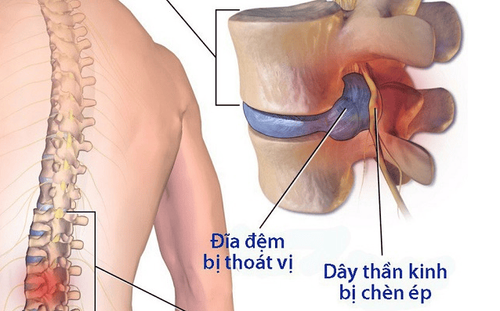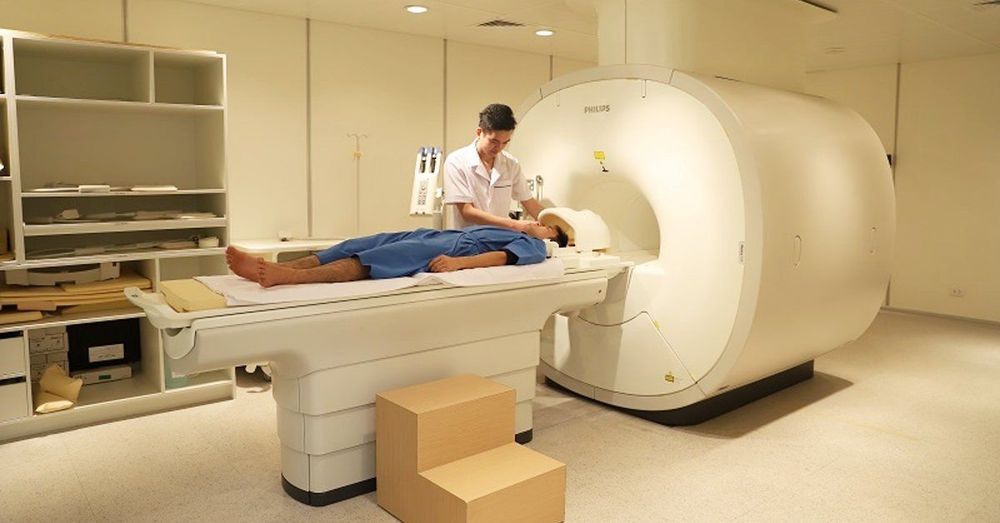This is an automatically translated article.
The article was professionally consulted with Master - Doctor Huynh An Thien - Department of Medical Examination and Internal Medicine, Vinmec Da Nang International General Hospital.Lumbar hip syndrome is one of the common diseases in bones and joints (second only to herniated disc disease in the number of people suffering from it). This is a disease that has a great impact on the patient's life and if not treated in time can cause unpredictable complications.
1. What is Lumbar Hip Syndrome?
In the lumbar spine region of each person, the spinal nerve roots from L1 to L5 are closely related to each other. When the spine or discs in the lumbar region are damaged, it will damage the nerve roots, causing lumbar lumbar syndrome (also known as sacral nerve root syndrome).Lumbar hip syndrome is a combination of 2 smaller syndromes, spinal syndrome and nerve root syndrome. This is a condition that involves the nerve roots, the spinal nerves in the lumbar region and the end of the spinal cord (sacral region).
2. Typical symptoms of lumbar hip syndrome

2.1 Spine syndrome Lumbar spine pain: It can be sudden pain, pain after injury or pain comes on slowly. Patients usually only have pain in certain vertebrae, intense or dull pain, when pressing on the spines of the vertebrae, there will be sharp pain in the diseased vertebrae; Deformed spine: Manifested in the state of physiological curve change, loss of flexion or reduction of lumbar spine, hunchback or scoliosis; Reduce the range of activities of the lumbar spine: Limit the movements of bending, leaning, tilting or rotating the spine. 2.2 Nerve root syndrome Nerve root pain, pain spreading along the path of the nerve root and painful symptoms such as festering. Pain increases with walking, standing, coughing or sneezing and decreases with rest. Some people have constant pain in all positions; Numbness in hands and feet, loss of sensation, reduced ability to walk, work and live; There are signs of nerve root tension: Detected by pressing on the vertebral line at the mid-thousand point of the intervertebral fissure, the patient feels pain.
3. Causes of low back syndrome

Herniated disc: The pressure from the herniated disc can cause irritation and inflammation of the nerve root. Intervertebral discs are pieces of cartilage located between the vertebrae in the spine, discs act as shock absorbers when the vertebrae move. Over time, the outer fibrous capsule of the disc can be torn, fluid from the disc flows out, putting pressure on nerve roots, leading to back - hip pain; Other causes: Spinal tumor, spinal stenosis, trauma, infection,...; Risk factors: Age (the risk of disease is proportional to the increase in age), nature of work (athletes practice sports that directly affect the back muscles, people often do heavy work) or lifting heavy objects, sitting in the wrong posture for a long time,...), suffering from spinal diseases (arthritis, osteoarthritis, low back pain, spondylolisthesis, congenital spinal deformities,... ).
4. Diagnosis and treatment of lumbar hip syndrome
4.1 Diagnosis Diagnosis is based on medical history, clinical symptoms and physical examination of the spinal cord and legs; Check muscle strength and reflexes; Indicated to perform imaging tests for cases of severe pain. Commonly used tests are X-rays, spinal magnetic resonance imaging, computed tomography, electrodiagnostic studies, or myelograms.
Acute lumbar hip syndrome: The pain usually disappears on its own after a period of time and the patient can apply home remedies to relieve pain such as: Hot or cold compress; Follow the stretching exercises; Practice sports suitable for health, without exertion; Use over-the-counter pain relievers. Chronic low back syndrome: The pain is often persistent and difficult to treat definitively. In this case, the patient needs to apply the following treatment measures: Using non-steroidal anti-inflammatory drugs; Taking steroid injections; Taking pain relievers and muscle relaxants; Change in daily living habits; Bring body weight back to normal; Practice exercises to correct posture, make back muscles strong and joints more supple; If the above treatment measures have been applied but the disease does not improve, the patient may be indicated for surgery.
5. Measures to prevent and control the progression of lumbar hip syndrome

Regular exercise to improve the flexibility of the lumbar muscles. However, the exercises need to be gentle, not putting pressure on the lumbar region; When lifting and carrying heavy objects, attention should be paid to correct posture; Limit sitting a lot and sitting in the wrong posture for a long time. People who work in offices or special jobs should get up, walk or exercise gently after every working hour; Avoid difficult and intense postures during married life; Limit wearing high heels to reduce pressure on the spine - lumbar; Build a scientific and nutritious diet (add foods rich in vitamin D and calcium to improve bone health), limit the use of alcohol or stimulants; Should lie on a hard bed, avoid hammock or rocking chair if you are having low back syndrome; Regular health check every 6 months. Lumbar hip syndrome is a disease that can be completely prevented or detected early, helping to avoid unpredictable complications. When there are signs of pain in the lower back to the hip, numbness in the limbs appearing with a large frequency, the patient should go to the doctor immediately.
When prescribed treatment according to any method, the patient also needs to absolutely follow the doctor's instructions to effectively repel the disease. You should choose reputable and quality medical facilities for the best treatment results and avoid recurrence.
Vinmec International General Hospital is a high-quality medical facility in Vietnam, the doctors and nurses are all professionally trained, domestic & international, experienced, dedicated to patients. The system of modern and modern facilities and medical equipment is imported from the US, on par with major hospitals in the world.
Please dial HOTLINE for more information or register for an appointment HERE. Download MyVinmec app to make appointments faster and to manage your bookings easily.














